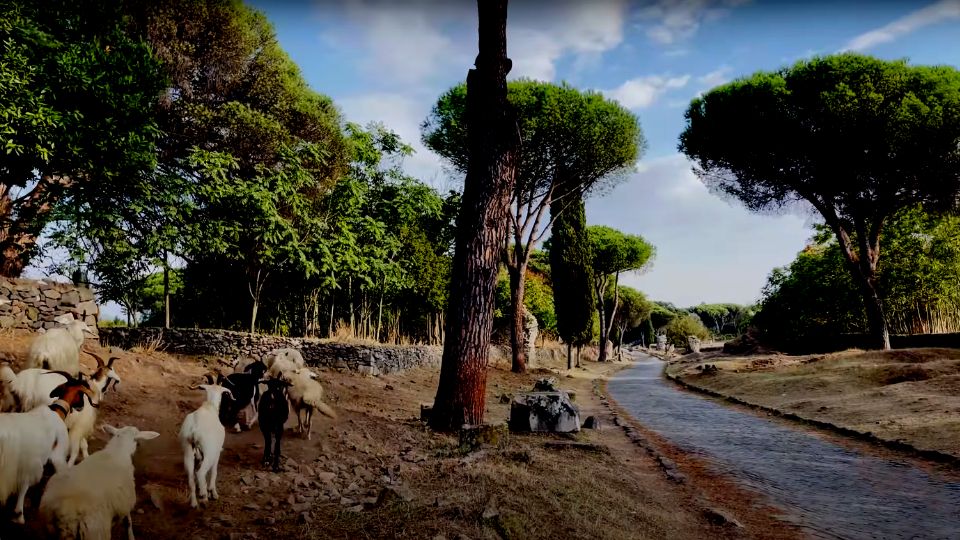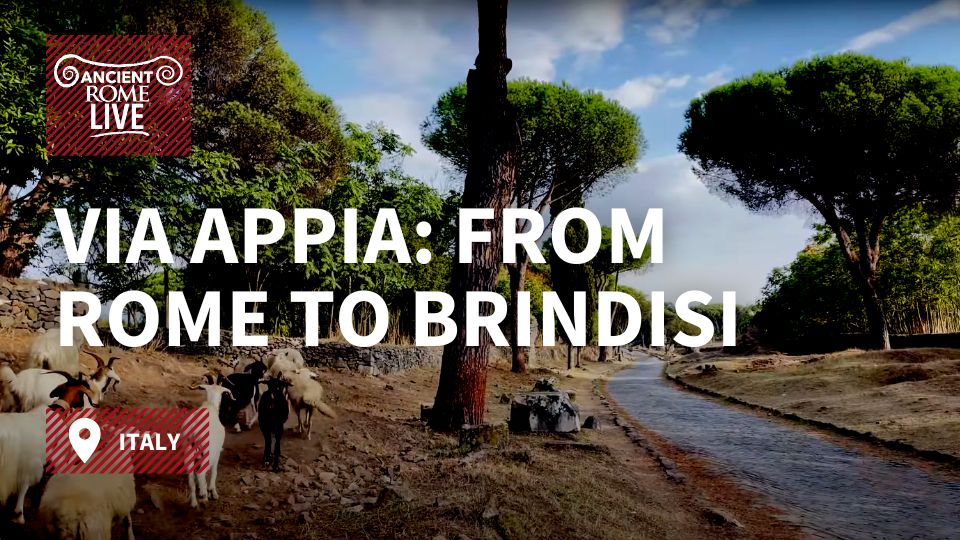Start with our video overview:
Known as Regina Viarium, the queen of roads, Via Appia was an innovative addition to the blossoming infrastructure of Rome when it was constructed in 312 BCE and is still considered as such. Today, some portions of the road are preserved in archaeological parks while others remain in use as roadways. Via Appia contains the longest stretch of straight road in Europe, a total of 62 kilometers.
Unlike other Roman roads, Via Appia was not named for its purpose or destination, but rather its benefactor, the censor Appius Claudius Caecus. Via Appia was the first road to be created by an individual, in response to Roman expansion to the south during the Second Samnite War. Caecus recognised a need for infrastructure and the means to transport the military into the disputed and newly conquered terrain (the main reason for the characteristic straightness of Roman roads was military efficiency). The famous saying ‘all roads lead to Rome’ stems from the Roman approach to road-building across the empire: 50,000 miles of roads were constructed to connect Rome with its territories, and many roads began within the city itself. Via Appia began at the Circus Maximus in the center of Rome and stretched 360 kilometers into Brundisium, modern Brindisi.
Much of the road remains visible today, and there are interesting landmarks along the route from Rome to Brindisi including milestones, bridges, walls embedded in the Italian landscape, and archaeological parks like those on the outskirts of Rome. The archaeological area around Rome is a patchwork of Republican, Imperial, and Christian monuments, such as the monumental tomb of Caecilia Metella, the villa of the 4th century emperor Maxentius, and several Christian churches and catacombs. The church of Domine Quo Vadis at the second mile marks the location where Saint Peter is said to have seen a vision of Jesus walking to Rome to be crucified again during Nero’s persecution of the Christians. Interpreting the vision as a sign to accept martyrdom, he turned back and returned to the city.
Through both long-standing monuments and near-hidden remnants, Via Appia narrates important moments in the legends and history of Rome. The building of the road itself indicates the rise of the individual in Republican society, the monumentalization of building works, and improvements in military strategy. The Republican and Imperial-era tombs demonstrate the wealth and status of the elite citizens of these periods and are evidence of stylistic and funerary customs. Churches dedicated to martyrs and catacomb burial grounds tell the story of Roman Christianity, from its hidden beginnings to its public dominance during the period of Late Antiquity. Today, the integration of the remains of the Via Appia into modern infrastructure and archaeological parks attests to the longevity of Roman construction and current preservation efforts.
References
- Berechman, “Transportation – economic aspects of Roman highway development: the case of Via Appia”, (Tel Aviv 2002).
- Claridge, “Rome: An Oxford Archaeological Guide”, (Oxford 2010).
- Kerr, “A Topography of Death: the buildings of the emperor Maxentius on the via Appia, Rome”, (Oxford 2002).
- Marconi, “The Oxford Handbook of Greek and Roman Art and Architecture”, (Oxford 2018).
- Porfyriou and B. Yu, “China and Italy: Routes of Culture, Valorisation and Management”, (Rome 2018).
This content is brought to you by The American Institute for Roman Culture, a 501(C)3 US Non-Profit Organization.
Please support our mission to aid learning and understanding of ancient Rome through free-to-access content by donating today.
Cite This Page
Cite this page as: Darius Arya, The American Institute for Roman Culture, “Via Appia: Introduction, from Rome to Brindisi” Ancient Rome Live. Last modified 11/04/2022. https://ancientromelive.org/via-appia-introduction-from-rome-to-brindisi/
License
Created by The American Institute of Roman Culture, published on 11/04/2022 under the following license: Creative Commons: Attribution-NonCommercial-ShareAlike. This license lets others remix, tweak, and build upon this content non-commercially, as long as they credit the author and license their new creations under the identical terms. Please note that content linked from this page may have different licensing terms.



